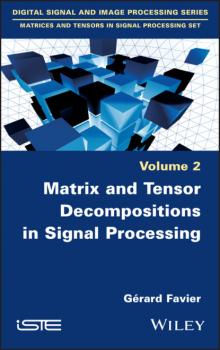Gérard Favier
Список книг автора Gérard FavierMatrix and Tensor Decompositions in Signal Processing
The second volume will deal with a presentation of the main matrix and tensor decompositions and their properties of uniqueness, as well as very useful tensor networks for the analysis of massive data. Parametric estimation algorithms will be presented for the identification of the main tensor decompositions. After a brief historical review of the compressed sampling methods, an overview of the main methods of retrieving matrices and tensors with missing data will be performed under the low rank hypothesis. Illustrative examples will be provided.
From Algebraic Structures to Tensors
Nowadays, tensors play a central role for the representation, mining, analysis, and fusion of multidimensional, multimodal, and heterogeneous big data in numerous fields. This set on Matrices and Tensors in Signal Processing aims at giving a self-contained and comprehensive presentation of various concepts and methods, starting from fundamental algebraic structures to advanced tensor-based applications, including recently developed tensor models and efficient algorithms for dimensionality reduction and parameter estimation. Although its title suggests an orientation towards signal processing, the results presented in this set will also be of use to readers interested in other disciplines. This first book provides an introduction to matrices and tensors of higher-order based on the structures of vector space and tensor space. Some standard algebraic structures are first described, with a focus on the hilbertian approach for signal representation, and function approximation based on Fourier series and orthogonal polynomial series. Matrices and hypermatrices associated with linear, bilinear and multilinear maps are more particularly studied. Some basic results are presented for block matrices. The notions of decomposition, rank, eigenvalue, singular value, and unfolding of a tensor are introduced, by emphasizing similarities and differences between matrices and tensors of higher-order.


